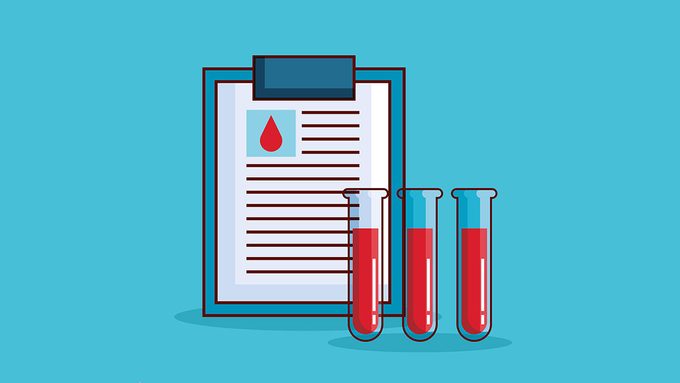Hemophilia: Everything You Need to Know About This Rare Blood Disorder
With more than 20 years of experience specializing in hemophilia, a Toronto nurse shares her knowledge of treating those living with this disease.

What you should know about hemophilia
In honour of National Nursing Week, we spoke with Ann Marie Stain, a hemophilia nurse co-ordinator in the inherited bleeding disorder clinic at The Hospital for Sick Children in Toronto, to give us some insight on this rare inherited blood disorder. Although Stain may now be retired, she spent more than 20 years specializing in hemophilia, treating children and educating families. Check out these simple lifestyle changes that can help reduce your risk for disease.
What is hemophilia?
When it comes to hemophilia, it is important to remember “this is a rare sex-linked inherited bleeding disorder that results in a deficiency or absence of one of the clotting proteins in the blood,” says Stain. Hemophilia doesn’t necessarily cause an individual to bleed more, but rather it takes longer for it to stop due to the blood not clotting as quickly. But most bleeding can also be internal, meaning that one can bleed into joints (knees, elbows and ankles), as well as into muscle tissue.
Who is affected by hemophilia
Know as “the Royal Disease,” due to Queen Victoria being a carrier of hemophilia and passing it on to her two daughters, this disorder primarily targets males. Although this disorder can occur in all races and ethnic groups, it is still rare, affecting 1 in 10,000 male births. Here are some diseases that strike women more than men.
Level of severity
An individuals’ bleeding episodes are grouped into three levels of severity: mild, moderate and severe. This is based on the level of clotting protein in the blood.
Signs to watch out for
The easiest way to detect hemophilia is right after birth, which is done through a heel prick or circumcision. Another sign: “Multiple raised bruises in soft tissues, such as the forearms, buttocks and legs,” says Stain. Especially in babies and toddlers, this disorder can occur through bleeding in the mouth. But in more milder cases, “the individual could be a teenager or adult before the diagnosis is made, as there hasn’t been a bleeding episode to trigger any concern.”
How this disorder is diagnosed
“If there is a known family history of hemophilia, a baby will be seen, and blood work will be drawn to determine if he or she has hemophilia,” she says. This is something that would take place within the first few weeks after birth. But if there is no known history, the individual will automatically be referred to a bleeding disorder clinic. Often times, many children will be brought in by their parents, who are concerned about bumps and bruises that have suddenly appeared on their child’s body.
A visit to a clinic will always include blood work, looking closely at the various levels of clotting protein in the blood. Ultimately, through family history, a physical exam and blood work, this will help to determine the level of severity of one’s diagnosis.
How to manage hemophilia
There is no steady history of success when it comes to treating hemophilia. In order to treat an individual with this disorder, “it involves replacing the missing clotting protein in the individuals’ blood,” she says. Over the years, blood clotting factor concentrates have been developed to give to hemophiliacs on a regular basis. “The clotting factor is infused into the body using a very small needle which is placed into a vein in either hand or inside the elbow.”
This form of treatment is divided into two methods:
On demand
“This method is used for when the individual is given an infusion of factor concentrate in response to an injury, trauma, or before a surgical procedure,” says Stain.
Prophylaxis
This method is preferred for children, adolescents and physically active adults. “It demands a commitment from the individual that he or she infuses the factor on a regular basis whether they are active that day or not,” she says. Although this treatment won’t prevent bleeding, it will help minimize it.
And depending on the severity of the bleed, other options can include “rest, ice, elevation, and compression (wrapping).”
Benefits of treatment
For individuals with hemophilia, the benefit of doing treatment is bright. Stain indicates the following advantages of using the clotting factor concentrate:
- Children can join sports teams and activities with their friends.
- Families can go on holidays and trips abroad and not worry.
- An adolescent can go off to university or college and live on his or her own.
- The factor concentrate is now portable, making it easy to mix and be infused virtually anywhere.
- Families are able to learn how to infuse their children, thereby eliminating repeated trips to the hospital.
And like with any disorder, there are complications
First complication: Inhibitors
According to Stain, this is where the immune system reacts to the infused clotting factor by producing an antibody. When this antibody interferes with the clotting factor by eliminating it, then it can’t do the job of stopping the bleeding. Also, make note that these inhibitors can develop at any time.
“A sign that someone may have an inhibitor is that the bleed is not improving despite the individual being treated,” she says. Even with there being various treatments to help eliminate inhibitors, it can still take a number of months, years and daily treatments to see any kind of result.
Second complication: Joint disease
“Joints are damaged by repeated bleeding into them,” she says. This form of damage can be a result of one severe bleed or a bunch of small bleeds. Ultimately, this can lead to an individual developing arthritis, acute and chronic pain, and limitation in motion. This is why Prophylaxis and early treatment is key for maintaining healthy joints.
Don’t forget to check out these foods and supplements to ease muscle and joint pain.




